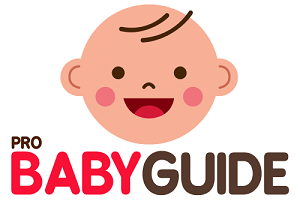The arrival of a newborn is a whirlwind of emotions and preparations. Creating a safe and cozy sleeping environment is paramount, and a bassinet is often the first choice for many parents. But with a variety of bassinets on the market, selecting the safest option can feel overwhelming. This comprehensive guide will equip you with the knowledge to choose a stationary bassinet that prioritizes your baby’s well-being.
Why Choose a Stationary Bassinet?
Stationary bassinets, unlike their portable counterparts, are designed for a designated spot in your nursery or bedroom. This stability offers several safety advantages:
- Reduced Risk of Falls: Stationary bassinets eliminate the risk of accidental tipping or rolling, which can occur with portable bassinets, especially when placed on uneven surfaces.
- Enhanced Stability: A sturdy, fixed base minimizes the risk of the bassinet wobbling or collapsing, even with a restless baby.
- Improved Accessibility: Stationary bassinets can be designed with a slightly lower profile, making it easier for parents to reach their babies without excessive bending.
Safety Standards and Certifications:
Look for a bassinet that adheres to the latest safety standards set forth by the Consumer Product Safety Commission (CPSC) in the United States or equivalent regulatory bodies in your country. These regulations address crucial aspects like:
- Slat Spacing: Slats, the vertical bars on the sides of the bassinet, should be no more than 2 ⅜ inches (6 centimeters) apart. This spacing prevents a baby’s head from getting stuck and minimizes the risk of suffocation.
- Hardware Strength: All hardware, including screws, nuts, and bolts, should be secure and free from defects. Look for a bassinet that has undergone stress testing to ensure it can withstand a baby’s weight and movement.
- Mattress Fit: The mattress should fit snugly inside the bassinet, with no gaps exceeding 1 inch (2.5 centimeters) between the mattress and the sides. A loose mattress creates an entrapment hazard.
- Breathable Materials: The mattress pad and any mesh sides should be made of breathable materials that allow for proper airflow and reduce the risk of SIDS (Sudden Infant Death Syndrome).
Top 10 Best Bassinets for Small Spaces 2024
Additional Safety Features to Consider:
Beyond the core safety standards, consider these features for an extra layer of protection:
- Mesh Sides: Opt for a bassinet with breathable mesh sides for optimal airflow and visibility. This allows you to easily monitor your baby while ensuring proper air circulation.
- Locking Wheels (if applicable): Some stationary bassinets might have locking wheels on the base for occasional mobility. Ensure these wheels lock securely to prevent unintended movement.
- Anti-Tip Design: A wider base or weighted bottom can further enhance stability and minimize the risk of tipping.
Beyond Safety: Functionality and Comfort
While safety is paramount, functionality and comfort are also essential aspects of choosing a bassinet. Here are some additional factors to consider:
- Mattress Adjustability: Look for a bassinet with adjustable mattress heights. This allows you to lower the mattress as your baby grows and becomes more mobile, preventing them from climbing out.
- Bedding: Choose a breathable and lightweight mattress pad specifically designed for a bassinet. Avoid using loose blankets or pillows, which can pose a suffocation hazard.
- Longevity: Consider how long you plan to use the bassinet. Some bassinets convert into toddler beds, offering extended use beyond the newborn stage.
- Aesthetics: While not a safety concern, the bassinet’s design should complement your nursery décor.
Tips for Using Your Bassinet Safely:
Once you’ve chosen the perfect safe bassinet, remember these practices for optimal use:
- Place the bassinet on a firm, flat surface: Avoid placing it on a bed, couch, or other soft surfaces that can create a suffocation hazard.
- Keep the sleep environment clutter-free: Remove all loose items like stuffed animals, blankets, and pillows from inside the bassinet.
- Practice safe sleep habits: Always place your baby on their back to sleep, following the American Academy of Pediatrics (AAP) recommendations for safe sleep.
- Regularly inspect the bassinet: Check for any loose hardware, worn-out mesh, or tears in the mattress pad. Replace damaged components immediately.
Conclusion:
Choosing a safe and comfortable bassinet is an important first step in creating a nurturing environment for your newborn. By prioritizing safety standards, considering additional features, and practicing safe sleep habits, you can ensure your baby gets the restful sleep they need to thrive. Remember, this guide offers a starting point, and consulting with your pediatrician for personalized advice is always recommended.




